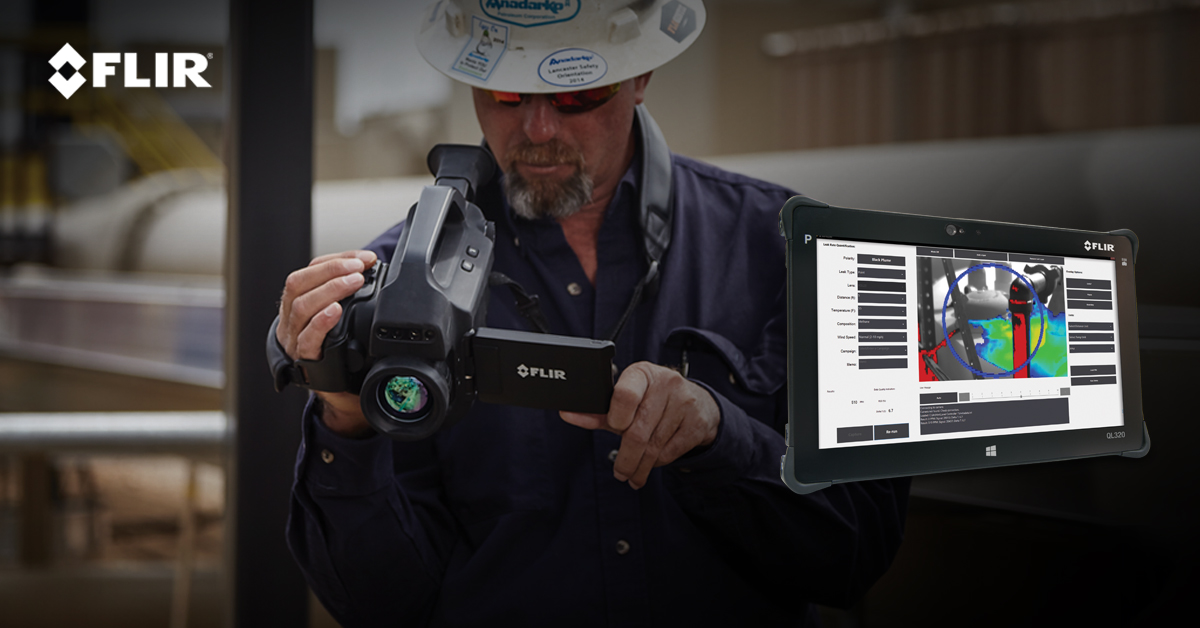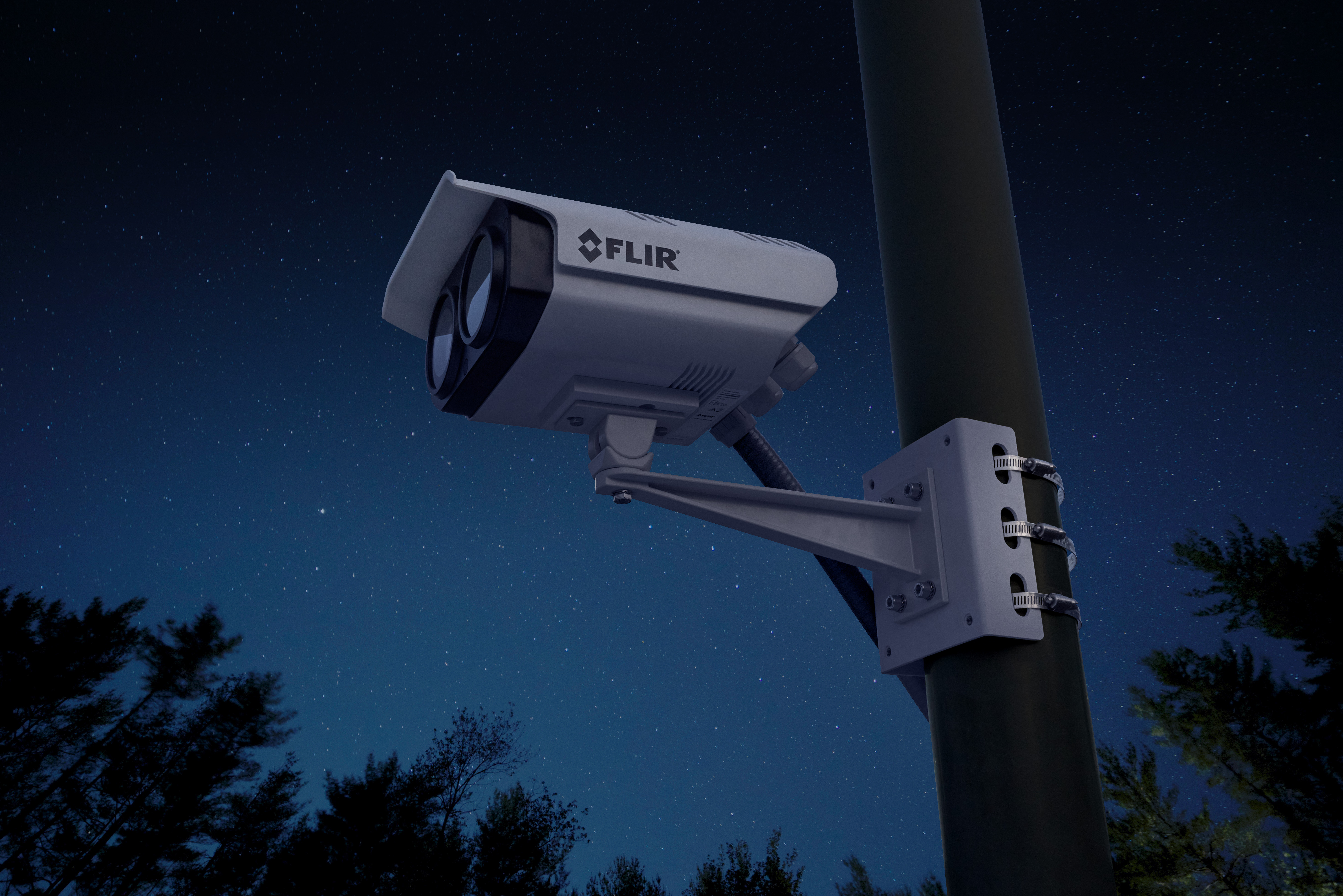The Latest Technology for Quantifying Gas Leaks

Advancements in Quantification of Optical Gas Imaging
In this recorded webinar, Director of Business Development Craig O’Neill, discussed how the FLIR QL320 is changing the way the oil & gas industry quantifies emissions and how easy it is to use with the family of FLIR OGI cameras. This portable solution is the pioneer in quantifying gas leaks with optical gas imaging, providing results within seconds in the field when tethered or post processed with FLIR Q-Mode when used in hazardous locations. Anyone who uses a FLIR GF620, GFx320, or GF320 can use this tablet to obtain more accurate emissions metrics, inspect difficult to measure components and reduce operational costs.

Questions and Answers
What is the minimum amount of leak THE FLIR QL320 can quantify?
The QL320 has been tested and can positively measure leaks as low as 100 scc/min for propane and 300 scc/min (11.8 gr/hr, 0.636 SCFH, 228.4 lb/yr) for methane.
How accurate is the quantitative mode? Is there a min-max range for it?
A 3rd party campaign conducted by Concawe has determined the accuracy of QOGI to be 30%.
How far away can you be from the leak and still measure it?
The maximum distance depends on a few factors, such as the lens you are using and the size of the leak. For smaller leaks imaged with the wide angle 23 mm lens, you should generally be somewhere between five and 15 feet (1.5 to 4.6 meters). For larger leaks imaged with the narrow 92 mm lens, the range can be extended out to 210 ft (64 m).
WHAT ACCURACY IS REQUIRED FOR DISTANCE INPUT?
Distance is an important factor in the algorithm to determine Mass or Volumetric readings. It is recommended to be as accurate as possible for these readings. If you are measuring Concentration, distance is not important.
Is there any DROP IN performance when measuring methane compared to propane with the reduced response factor?
No, because you're telling the tablet or QL mode in the camera what gas you are imaging.
We have supplied Getac ruggedized tablets with FLIR cameras. some of their tablets are ATEX rated SO Could we install the software on theM?
At this time the FLIR QL320 tablet is solely where the software can be installed. It is important to note that this tablet is ATEX rated for Class 1; Div 2 or Zone 2 locations.
What are the external sources that may affect the results?
Accurate user inputs are critical to producing correct readings. These include polarity, distance, ambient air temperature, gas composition, and wind.
will the flir QL320 give us the same results with different mode such as (HSM) High sensitivity mode or normal mode?
When using the tablet connected or Q-Mode, the camera must run in normal mode.
Is it possible to install the software in a PC rather than having Tablet?
At this time the software can only be installed on the FLIR QL320 tablet. We will take this request into consideration for the future.
is the temperature in the user data just taken from your anemometer? and how important is that temperature accuracy?
The input User Data temperature is manually entered into the FLIR QL320 or Q-Mode. It can be from the thermo-anemometer (such as the Extech 45158) or another device. It is ideal to get as accurate of a temperature as possible so that the Delta T is captured correctly and the overlay works correctly.
About illumination: could you please explain where light comes from for cooled and for uncooled cameras?
The camera operates by the energy from components in the background and visualizes specific gases with filters that highlight the gas absorption of that specific gas.
Why would I want OR need to measure leaks? Are there regulations around this?
There are some regulations that require quantification when using OGI for leak detection and repair. In certain Canadian provinces, for example, the QL320 is approved to meet those regulatory requirements. In the US, there are currently no regulations requiring quantitative OGI but the method is used by some regulatory agencies for inspection and enforcement. Aside from regulatory applications, our customers are using the FLIR QL320 to prioritize leak repairs, determine methane emissions inventory, and determine the dollar value of leak repairs. QL users are also holding manufacturers of products (actuators, hatches, etc.) accountable to stated leak rate ranges.
When selecting gas composition, what do you suggest when composition is unknown?
Use what you think the most prominent compound would be in the gas composition. For example, we use CH4 in many upstream facilities because that's usually the prominent gas, even though it may not be the only compound.
What is the minimum length of .Seq files in QOGI mode?
The Q-Mode files are generally 20 seconds in length and comprised of approximately 300 frames (at 15 Hz).
What type of gases can be quantified with flir QL320? Can we quantify an Instrument Air LEAK (e.g. air used for Field Instruments)?
No. The QL320 is designed to work with FLIR GF320, GFx320 and GF620 cameras that are filtered for hydrocarbon gases.
How does this compare to other gas measurement technologies?
A 3rd party campaign conducted by Concawe concluded that QOGI was approximately 6x more accurate than a TVA.
What is the minimum differential temperature requirement for quantification of gas?
2° of Delta T is recommended for ideal results.
when multiple leaks, is it convenient to measure them in the same image? is it possible to isolate the gas from a second leak or prohibit from getting into the register area?
It is ideal to measure one leak at a time when using the QL320. When a second leak is in the scene of the camera and enters the boundary for measurement, it would not take into consideration the full reading of the leaking component as the origin of the leak (point release) would not be in the center of the screen.
Apart from pdf reporting do we have any other format to fit customer wish list like word template?
No, the report is in PDF only. The resulting videos are in a non-proprietary AVI file that could be used in a Word document.
Can I change gas composition or make my own gas composition?
Yes, you can change the gas composition chosen in the file and even create a specific composition if desired.
Can we use it in Zone-1 area (in a Petrochemical plant)?
No, neither the FLIR QL320 nor the FLIR camera are Zone 1 certified. You can use the GFx320 with Q-Mode in a Zone 2 area and then perform the measurement in the tablet afterwards.
can it detect hydrogen leak?
No, hydrogen cannot be visualized with a GF320 or any infrared camera.
I understand the quantification is very dependeNT on a correct wind speed measurement. Where do you measure the wind speed?
Wind measurement is not critical to be accurate as the FLIR QL320 only has three options: low (under 2 mph/3.2 kph), medium (2-10 mph/3.2-16 kph) and high (above 10 mph/16 kph). You can use an anemometer and put that input into the Q-Mode or tablet.


